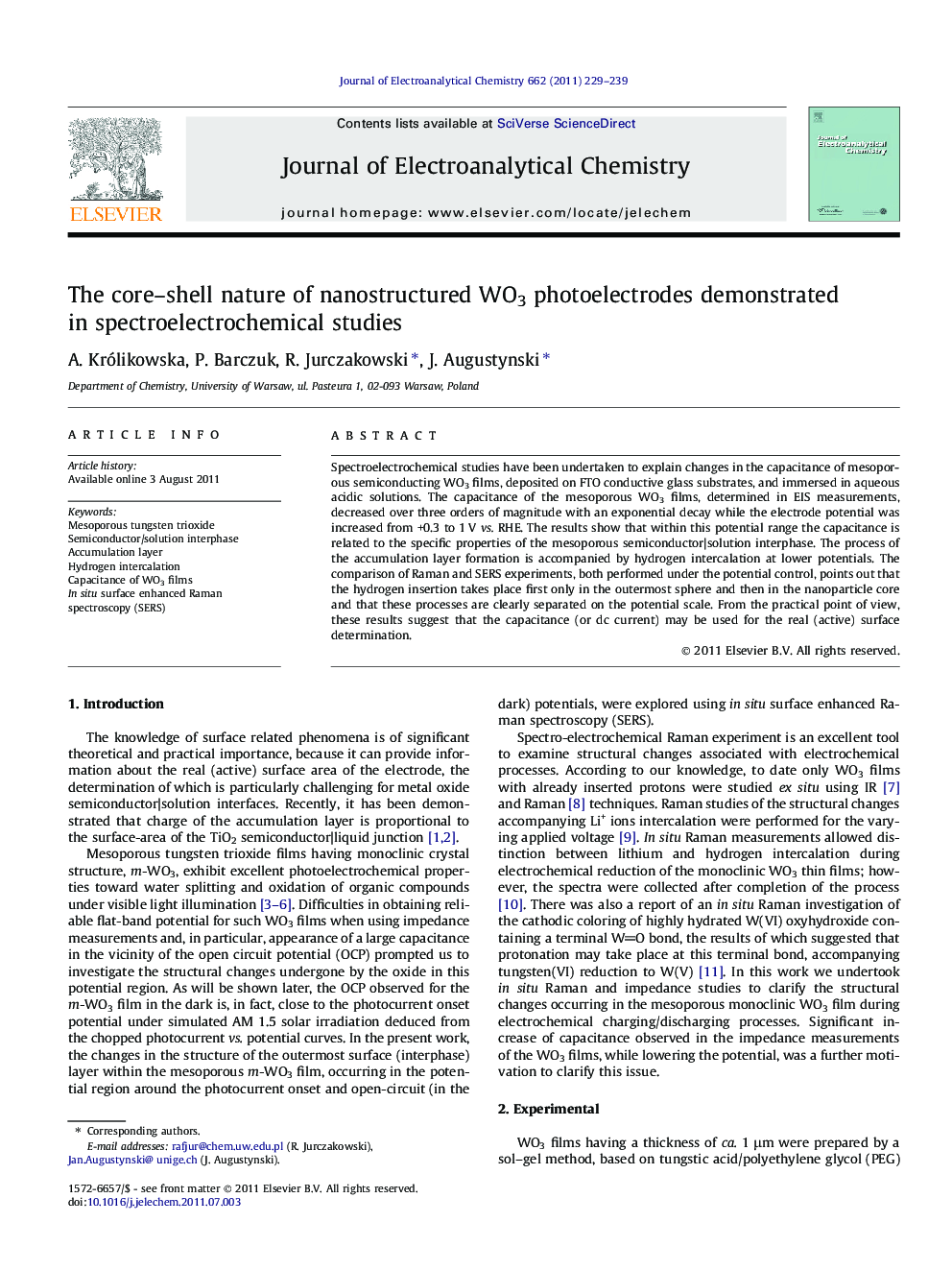| Article ID | Journal | Published Year | Pages | File Type |
|---|---|---|---|---|
| 219445 | Journal of Electroanalytical Chemistry | 2011 | 11 Pages |
Spectroelectrochemical studies have been undertaken to explain changes in the capacitance of mesoporous semiconducting WO3 films, deposited on FTO conductive glass substrates, and immersed in aqueous acidic solutions. The capacitance of the mesoporous WO3 films, determined in EIS measurements, decreased over three orders of magnitude with an exponential decay while the electrode potential was increased from +0.3 to 1 V vs. RHE. The results show that within this potential range the capacitance is related to the specific properties of the mesoporous semiconductor|solution interphase. The process of the accumulation layer formation is accompanied by hydrogen intercalation at lower potentials. The comparison of Raman and SERS experiments, both performed under the potential control, points out that the hydrogen insertion takes place first only in the outermost sphere and then in the nanoparticle core and that these processes are clearly separated on the potential scale. From the practical point of view, these results suggest that the capacitance (or dc current) may be used for the real (active) surface determination.
► Mesoporous m-WO3 electrodes were investigated in spectro-electrochemical experiments. ► Formation of the accumulation layer is accompanied by hydrogen insertion. ► Intercalation takes place first only in the outermost sphere of the nanoparticles. ► Intercalation in the nanoparticle core is clearly separated on the potential scale. ► Results suggest that H intercalation may be used for the real surface determination.
